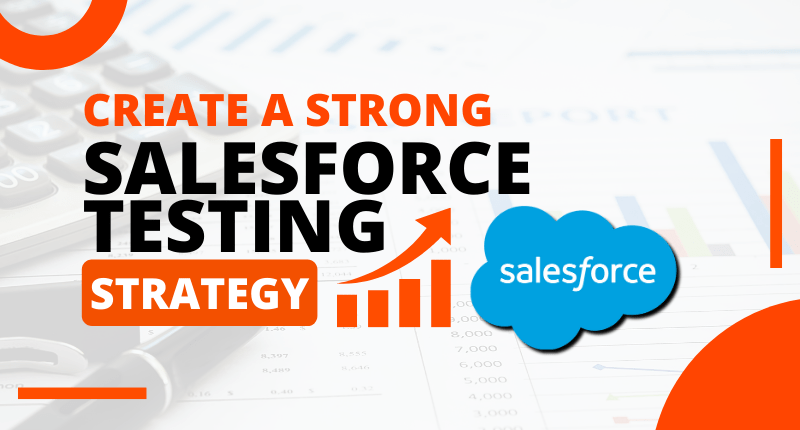Salesforce, a leading customer relationship management (CRM) platform, plays a critical role in helping organizations manage their sales, marketing, and customer service processes. Salesforce enables companies to streamline their operations, enhance customer engagement, and drive business growth. However, to ensure the seamless functionality of Salesforce and maximize its benefits, a robust testing strategy is crucial. In this blog post, we will explore the key elements of creating a strong Salesforce testing strategy that minimizes risk, optimizes performance, and ensures a superior user experience.
1. Understand the Salesforce Landscape:
Before diving into testing, it’s essential to gain a comprehensive understanding of your Salesforce implementation. Evaluate your organization’s specific requirements, customizations, integrations, and data flows. Identify the critical business processes and functionalities that need to be thoroughly tested. This analysis will serve as the foundation for designing your testing strategy.
2. Define Clear Testing Objectives:
Establishing clear testing objectives is vital for ensuring a focused and efficient testing process. Determine what you aim to achieve through testing, such as validating data integrity, verifying customizations, or assessing system performance. Align these objectives with your overall business goals to prioritize testing efforts effectively.
3. Identify Test Scenarios:
Based on the identified objectives, create a list of test scenarios that cover various aspects of Salesforce functionality. Test scenarios should encompass different user roles, business processes, integrations, and potential edge cases. Consider both positive and negative scenarios to evaluate the system’s behavior in different situations.
4. Design Test Cases:
For each test scenario, design detailed test cases that outline the steps to execute, the expected outcomes, and the data to be used. These test cases should be easily understandable and reusable, ensuring consistency and scalability in your testing efforts. Incorporate test data management strategies to ensure realistic and comprehensive testing.
5. Prioritize Testing Areas:
Not all aspects of Salesforce are equally critical to your business processes. Prioritize the testing areas based on their impact on core functionalities, customer experience, and regulatory compliance. Allocate resources and time accordingly to ensure thorough testing of high-priority areas while maintaining coverage of other important components.
6. Automate Testing Processes:
Leverage the power of test automation to enhance efficiency, reduce human error, and accelerate the testing cycle. Identify repetitive and time-consuming test cases suitable for automation and invest in automation tools compatible with Salesforce, such as Selenium or Salesforce’s own testing framework. Regularly review and update automated test scripts to keep pace with system changes.
7. Perform System Integration Testing:
Salesforce often integrates with various external systems, such as marketing automation platforms or accounting software. System integration testing is crucial to verify the smooth data exchange between Salesforce and these systems. Develop test scenarios that cover integration points, simulate data transfers, and validate end-to-end workflows.
8. Incorporate Performance Testing:
To ensure optimal system performance and responsiveness, include performance testing in your strategy. Simulate various user loads, stress test the system with heavy data volumes, and assess response times. Identify and resolve performance bottlenecks, ensuring Salesforce can handle your organization’s current and future user demands.
9. Execute Regression Testing:
As changes and enhancements are made to your Salesforce instance over time, regression testing becomes essential to ensure that existing functionalities are not impacted. Prioritize and maintain a regression test suite that covers critical areas and executes regularly during the release cycle. This helps catch any unintended side effects and ensures a stable environment.
10. Continuous Improvement:
A robust Salesforce testing strategy is an ongoing process. Continuously evaluate and improve your testing approach based on feedback, lessons learned, and evolving business needs. Regularly update your test scenarios, test cases, and automated scripts to adapt to system changes and incorporate new features.
Conclusion:
A strong Salesforce testing strategy is integral to the success of your CRM implementation. By understanding your Salesforce landscape, defining clear objectives, identifying test scenarios, automating testing processes, and prioritizing critical areas, you can minimize risks and ensure a smooth user experience. Incorporating system integration testing, performance testing, regression testing, and embracing continuous improvement will help you build a solid foundation for your Salesforce testing strategy and optimize the benefits derived from this powerful CRM platform.




